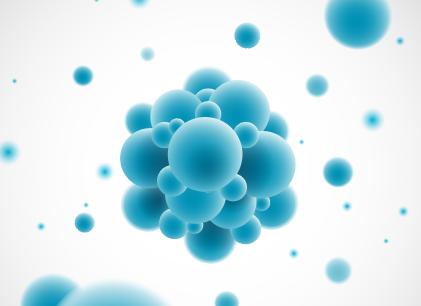Exosomes for Small Molecule Delivery
Online InquiryThe physicochemical properties of the drug molecules and the fate of the drugs in the in vivo environment play an important role in achieving the desired bioavailability. As natural carriers, exosomes have not only been utilized to deliver RNA and proteins but also for the delivery of therapeutic small molecules, including chemotherapeutic drugs and plant-derived bioactives. Here, we highlight the great potential of exosomes for delivering small drug molecules.

Exosomes in small molecule drug delivery
Exosomes have been applied to deliver small molecules, both hydrophilic and lipophilic, due to their drug-carrying and signal-carrying capabilities. Small molecule drugs can be loaded into exosomes in different manners, which are divided into two major strategies. One strategy (loading during exosome biogenesis) is to load exosomes with drugs in the donor cell using transfection or co-incubation methods. Another strategy (loading after exosome isolation) is to load exosomes with small molecule drugs after they are secreted outside the donor cell. Exosomes can capture the amount of small molecules, i.e. the drug loading is related to the molecular weight, lipophilicity and functional groups of the small molecules. To date, a variety of small molecule drugs have been attempted for delivery in exosomes, such as paclitaxel (PAC), doxorubicin (DOX), withaferin A (WFA), celastrol (CEL), curcumin (CUR) and anthocyanidins (Anthos).
- Exosomes act as PAC delivery vehicles
PAC is used as a first- or second-line treatment for many types of cancer, usually by intravenous injection, but has serious side effects. This is mainly due to the rather poor water solubility of PAC and the inability to reach the therapeutic drug dose with oral bioavailability. The exosomal formulation of oral PAC has been reported to be significantly more effective in the treatment of lung tumors with less systemic, hepatic and renal toxicity as well as immunotoxicity compared to free PAC administered intraperitoneally.
- Exosomes act as CEL delivery vehicles
CEL is a triterpenoid isolated from Tripterygium wilfordii herb with strong anticancer activity. Milk exosomes have been used to deliver CEL. Exosomal CEL has shown enhanced in vitro and in vivo antitumor efficiency compared to free CEL. The increased bioavailability of CEL through exosomal formulation may lead to enhanced anti-tumor ability.
- Exosomes act as CUR delivery vehicles
CUR is one of the most widely studied plant-derived bioactive substances and has shown great potential in cancer therapy. This compound is rapidly metabolized and eliminated systemically and is used at high doses without toxicity. Thus, it suffers from very poor bioavailability. Exosomal CUR has been reported to be efficiently taken up by microglia cells, while free CUR has failed to cross the blood-brain barrier and doesn't show any therapeutic effect. The encapsulated compounds escalated the tissue bioavailability of CUR in the lung, liver and brain compared to free CUR in vivo. Animals treated with exosomal CUR have shown a lack of gross and systemic toxicity. In addition, exosomal CUR also exhibited a significantly higher ability to inhibit the growth of cancer cells, including lung, cervical and breast cancer cells, compared to free CUR.
Creative Proteomics is committed to providing innovative solutions to power your biological research. We are proud to offer a range of exosome research and analysis services. In addition to scalable upstream production and isolation of exosomes, we offer downstream processing for efficient exosome characterization and labeling to obtain high-quality, functional exosomes. Notably, our services include the following services but are not limited to them. Our comprehensive, customized, and flexible services can greatly promote the application of exosomes as carriers for small molecule delivery.
| Exosome analysis services | |
|---|---|
| Exosome isolation and purification | Sucrose gradient centrifugation |
| Polymer-based exosome enrichment method | |
| Immunomagnetic bead method | |
| Size exclusion chromatography method | |
| Exosome identification | Nanoparticle tracking analysis (NTA) |
| Electron microscopy analysis | |
| Western blot | |
| Exosome marker assay | Isolation and enrichment of exosomal CD9, CD63, CD81, TSG101, HSP70 proteins |
| Exosome surface protein identification and quantitative analysis | |
| Exosome engineering | Exosome labeling and tracking |
| Cargo loading | |
| Engineered exosome production | |
| Cargo loading assessment | |
| Exosomes labeling and tracking | Exosome fluorescent labeling |
| Fluorescence exosome purification | |
| Fluorescent exosome concentration labeling | |
| Exosome multiomics analysis | Exosome proteomics analysis: Exosome protein profile identification Exosome protein composition analysis Exosome protein expression level analysis Exosome protein differential expression analysis |
| Exosome metabolomics analysis: Exosome differential metabolite screening Qualitative and quantitative analysis of target metabolites/metabolic pathways | |
| Exosome lipidomics analysis: Exosome lipid composition and level analysis Differential expression analysis of exosomal lipid molecules Qualitative and quantitative analysis of targeted lipid molecules | |
| Exosomal biogenesis and identification | Our capabilities will provide strong support for the study of exosome biogenesis and its identification. |
| Exosomal cargo and loading mechanism | Our services can greatly help the study of exosomal cargo and loading mechanism, facilitating the diagnostic and therapeutic applications of exosomes. |
| Exosome function research | In vitro analysis of the function of exosomes In vivo analysis of the function of exosomes |
References
- Kandimalla, Raghuram, et al. "Milk exosomes: A biogenic nanocarrier for small molecules and macromolecules to combat cancer." American Journal of Reproductive Immunology 85.2 (2021): e13349.
- Zhang, Yi, et al. "Exosome: a review of its classification, isolation techniques, storage, diagnostic and targeted therapy applications." International journal of nanomedicine 15 (2020): 6917.
* For Research Use Only. Not for use in diagnostic procedures.



